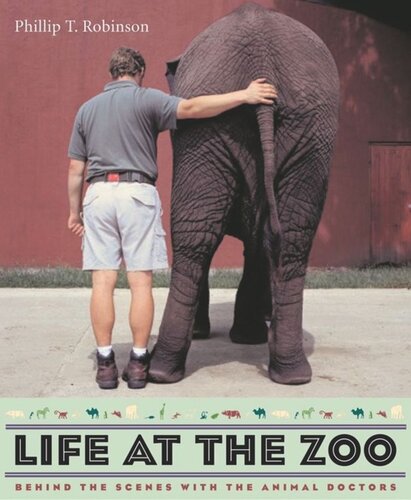

Most ebook files are in PDF format, so you can easily read them using various software such as Foxit Reader or directly on the Google Chrome browser.
Some ebook files are released by publishers in other formats such as .awz, .mobi, .epub, .fb2, etc. You may need to install specific software to read these formats on mobile/PC, such as Calibre.
Please read the tutorial at this link: https://ebookbell.com/faq
We offer FREE conversion to the popular formats you request; however, this may take some time. Therefore, right after payment, please email us, and we will try to provide the service as quickly as possible.
For some exceptional file formats or broken links (if any), please refrain from opening any disputes. Instead, email us first, and we will try to assist within a maximum of 6 hours.
EbookBell Team

0.0
0 reviewsSeasoned veterinarian Phillip T. Robinson shares his remarkable stories of working at the world-famous San Diego Zoo. In vivid detail he describes encounters with foulmouthed parrots, gum-chewing chimps, and stinky flamingoes, and the sometimes dangerous consequences of both human and animal interactions. He relates insider stories such as escaping the affections of a leopard who wanted to be a lap cat, training a gorilla to hold her newborn baby gently (instead of scrubbing the floor with it), operating on a semi-anesthetized elephant, and figuring out how to feed koalas in captivity, as well as why the zoo's polar bears were turning green. Robinson's wildly entertaining tales illuminate the hazards and rewards of a world in which the "natural" and "unnatural" can collide, insightfully tracing the evolution of zoos from banal menageries to important conservation institutions.
Please Do Not Annoy, torment, pester, plague, molest, worry, badger, harry, persecute, irk, bullyrag, vex, disquiet, grate, beset, bother, tease, nettle, tantalize or ruffle the Animals.—sign at zoo
Since the early days of traveling menageries and staged attractions that included animal acts, balloon ascents, and pyrotechnic displays, zoos have come a long way. The Ménagerie du Jardin des Plantes in Paris, founded in 1793, didn't offer its great apes lessons in parenting or perform dental surgery on leopards. Certainly the introduction of veterinary care in the nineteenth century—and its gradual integration into the twentieth—has had much to do with this. Today, we expect more of zoos as animal welfare concerns have escalated along with steady advances in science, medicine, and technology. Life at the Zoo is an eminent zoo veterinarian's personal account of the challenges presented by the evolution of zoos and the expectations of their visitors. Based on fifteen years of work at the world-famous San Diego Zoo, this charming book reveals the hazards and rewards of running a modern zoo.
Zoos exist outside of the "natural" order in which the worlds of humans and myriad exotic animals would rarely, if ever, collide. But this unlikely encounter is precisely why today's zoos remain the sites of much humor, confusion, and, occasionally, danger. This book abounds with insights on wildlife (foulmouthed parrots, gum-chewing chimps, stinky flamingoes), human behavior (the fierce competition for zookeeper jobs, the well-worn shtick of tour guides), and the casualties—both animal and human—of ignorance and carelessness. Phillip Robinson shows how animal exhibits are developed and how illnesses are detected and describes the perils of working around dangerous creatures. From escaping the affections of a leopard that thought he was a lap cat to training a gorilla to hold her newborn baby gently (instead of scrubbing the floor with it) and from operating on an anesthetized elephant ("I had the insecure sensation of working under a large dump truck with a wobbly support jack") to figuring out why a zoo's polar bears were turning green in color, Life at the Zoo tells irresistible stories about zoo animals and zoo people.